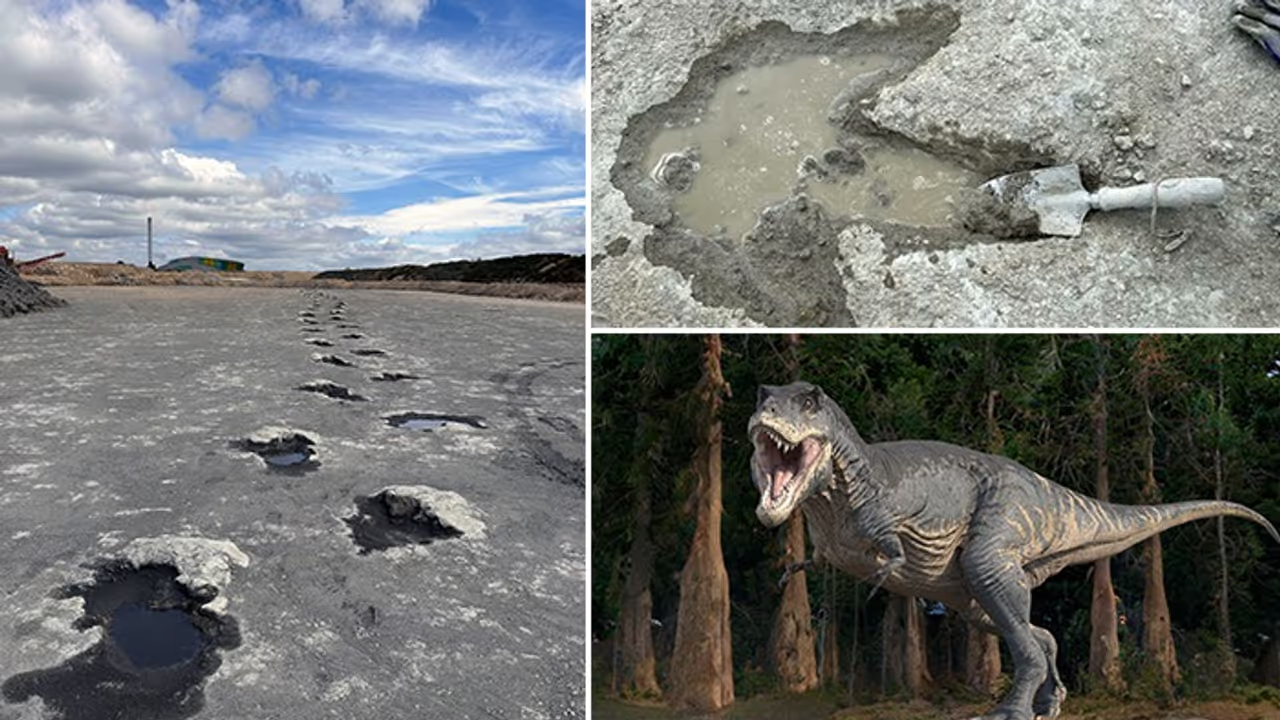Scientists uncovered hundreds of dinosaur footprints in Oxfordshire, revealing insights into the behaviours and interactions of prehistoric giants like Cetiosaurus and Megalosaurus.
In a remarkable discovery, scientists have uncovered what is being called Britain’s "dinosaur highway." The finding, dating back 166 million years, reveals an expansive area of ancient quarry floor teeming with the footprints of giant dinosaurs from the Middle Jurassic period.

Researchers from the Universities of Oxford and Birmingham have uncovered a vast expanse of quarry floor filled with hundreds of dinosaur footprints. The discovery includes five of the UK's largest dinosaur trackways, with the longest stretching 150 meters.
Four of these trackways belong to long-necked herbivores, likely Cetiosaurus, an 18-meter-long relative of the Diplodocus. The fifth track was left by a passing Megalosaurus, a fierce, nine-meter-long predator that roamed the boggy lagoons of Britain during the Middle Jurassic period.
These exceptionally well-preserved tracks offer remarkable insights into the lives of these ancient giants, even capturing a moment when two dinosaurs crossed paths. Researchers believe it's highly probable that additional tracks remain to be discovered.
The tracks were found in the Jurassic limestone of Dewars Farm Quarry in Oxfordshire. Originally hidden beneath clay, they were first noticed by quarry worker Gary Johnson, who felt 'unusual bumps' while stripping away the clay to reach the quarry floor. Recognizing the importance of the find, experts were alerted, leading to a full-scale excavation of the site.
In June of the previous year, over 100 scientists and volunteers carefully uncovered more than 200 fossilized footprints.
In addition to creating casts of the prints for further analysis, the researchers captured over 20,000 photographs to construct a detailed 3D model of the site.
This discovery builds on earlier findings from 1997, when a previous limestone quarry in the area revealed more than 40 tracks from sauropods and theropods, including species like the Tyrannosaurus Rex. However, that site was uncovered before the widespread use of digital cameras and drones, meaning no 3D models of the tracks were created.
As a result, this new discovery offers a particularly valuable glimpse into a dynamic prehistoric ecosystem. Around 166 million years ago, before the limestone layer formed, this region of Oxfordshire was a warm, shallow lagoon, resting atop a thick bed of mud.
Dr Duncan Murdock, a palaeontologist from Oxford University explained the conditions that allowed such incredible preservation. "As the feet of the giant animals, some up to 10 tonnes, went into the mud they left behind both an impression of the foot and a rim of displaced mud around the print," he was quoted as saying in a DailyMail report.
"The surface was then flooded and buried with a more clay-rich mud, preserving the footprints. Over time, and further burial, these sediments turned into rock," he added.
The thick mud has preserved such remarkable detail that scientists can observe how the mud was deformed as the dinosaurs' feet sank in and out.
"Unlike fossil bones, finds like these tell us about the behaviour of extinct animals. The size, shape and position of the footprints can tell us how these dinosaurs moved, their size and speed," Dr Murdock added.
Each three-toed Megalosaurus track measures approximately 65 cm in length and is spaced about 2.7 meters apart.
Using these measurements, scientists estimate that this ancient predator was likely moving at around three miles per hour (5 km/h), similar to the walking speed of a human. At one point along the track, paleontologists discovered where the paths of a Megalosaurus and a sauropod intersected.
By analyzing the disturbances in the mud, the researchers believe the sauropod passed through first, followed by the Megalosaurus some time later.
Scientists believe that even more tracks may be uncovered in the future. Professor Kirsty Edgar, a micropalaeontologist from the University of Birmingham, remarked that it is "very, very likely" that more footprints will be found, particularly since tracks are often discovered in river, lake, or coastal environments, which are ideal conditions for the preservation of such fossils.
The quarry is still actively extracting rock layers above the trackway surface, meaning further discoveries may lie ahead. Smiths Bletchington, the quarry's operators, are working with Natural England to explore options for preserving the site and ensuring its continued study.
